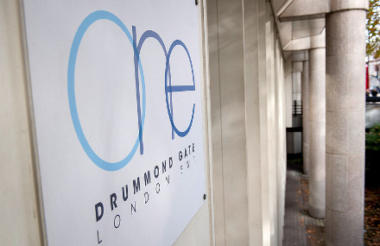Charity representative bodies have told the Charity Commission that they have serious concerns about its draft guidance for the use of its power to issue official warnings.
The consultation closes today, and the power is due to come into effect on 1 November, but sector bodies have urged the Commission to think again about aspects of the guidance and provide greater clarity, in their submissions.
NCVO, the Association of Charitable Foundations, Charity Finance Group, Charity Law Association and Directory of Social Change have all urged the Commission to be clearer about when it will use its power, lengthen the 14-day notice period before it can be implemented, and should pull back from the default position that warning should be published, and remain on the Commission’s website for two years.
14-day notice period should be increased
The Charity Law Association has said that the Commission’s proposed notice period of 14 days for representations is too short and suggested it be increased to 28 days.
“A notice period of 14 days does not allow sufficient time for charities and their trustees to take the steps required to respond fully. Even a short absence by a senior staff member or trustee could make it completely impracticable for a charity to make any meaningful representations,” it said.
The CLA also called for the default position to be that warnings were not published and that when they were made public it should be for six months instead of two years, and that if the charity has rectified the issue the notice should be withdrawn.
The CLA has included an 11-point checklist of things the Commission needs to explain.
- Contents of warning notice
- Who receives the notice, and how it is sent
- What notice will look like
- How to make representations
- Serving the warning – including what it will look like
- Publication of warnings – including, where it would be published, for how long, how it would appear, the circumstances in which amendments/comments would be added, and how a correction could be made
- Steps after a warning is served
- Varying a warning which has been issued
- Withdrawal of warning – policy and process
- Notification to Commission of relevant details relating to warning
- Challenging a warning
‘Commission could be pressured by the media’
CFG’s response also warned that there didn’t appear to be any safeguards to prevent the Commission using its official warning power to appear tough in the media.
Its response added: “We are concerned that the Charity Commission may be forced into using this new power by external stakeholders, such as the media, as a ‘lightning bolt’ to punish charities without the checks and balances that come with a statutory inquiry. The Charity Commission should take steps to ensure that external stakeholders understand that this is not how the official warning will operate.”
CFG also suggested the approach outlined by the Commission was “punitive”. It said: “We have concerns about the warning being used as a general enforcement power between a statutory inquiry and ‘unofficial’ advice or guidance. There has been little evidence or justification given for how an official warning would be useful in other situations, for example, protecting a charity’s reputation. The guidance does not generate any greater confidence in the utility of an official warning.”
DSC’s response also raised concerns about how the Commission could use the warning power to address criticism in the media.
It said: “For example, if a charity is involved in campaigning which is within the law, but potentially controversial, and this results in negative comment from some sections of the press, does this constitute reputational damage and hence ‘mismanagement’ giving grounds for the commission to intervene and issue an official warning?”
DSC also said: “The power to issue warning must also not become the go-to option because the Commission lacks the time, resources or willingness to conduct a fair investigation into the issues.”
Two-tiered approach
In a joint submission, NCVO and the ACF said: “Having read the draft guidance, our view is that greater clarity is needed.
“In particular, it is not clear to us where this new power sits within the range of the Commission’s available regulatory powers.
They suggested that the Commission adopt a two-tiered approach and issue either a ‘yellow’ or a ‘red’ warning, dependent on the severity.
‘Needs a rethink’
Acevo said also called on the Commission to rethink its guidance.
In a statement, sent ahead of completion of its full response, it said: “We are concerned that this
document lacks strategic vision and it needs to be made clearer how this new power will link with the other strands of the Charity Commission’s work and how it will help the Commission to fulfil its mission and vision. The Charity Commission needs to rethink this.”
Commission response
Yesterday the regulator issued a statement signalling that was prepared to take on board criticism of its guidance.
Speaking at an event yesterday, Kenneth Dibble, head of legal services, said it should be considered a positive thing that the Commission responds to crticisim, “The very fact that we go out to consulation and do guidance or might withdraw guidance if found to be wanting should be a good thing”.
He said he had just rewritten the guidance on its disqualification power. The consultation on that power closed earlier this month, and responses were also critical of lack a clarity about how the power would be used.
Dibble said it was difficult getting the guidance to please everyone and that it had to be “consistent with the law”.
He urged the sector to “put some trust in the Commission that it will get it right and won’t go off the rails” with its new powers.









